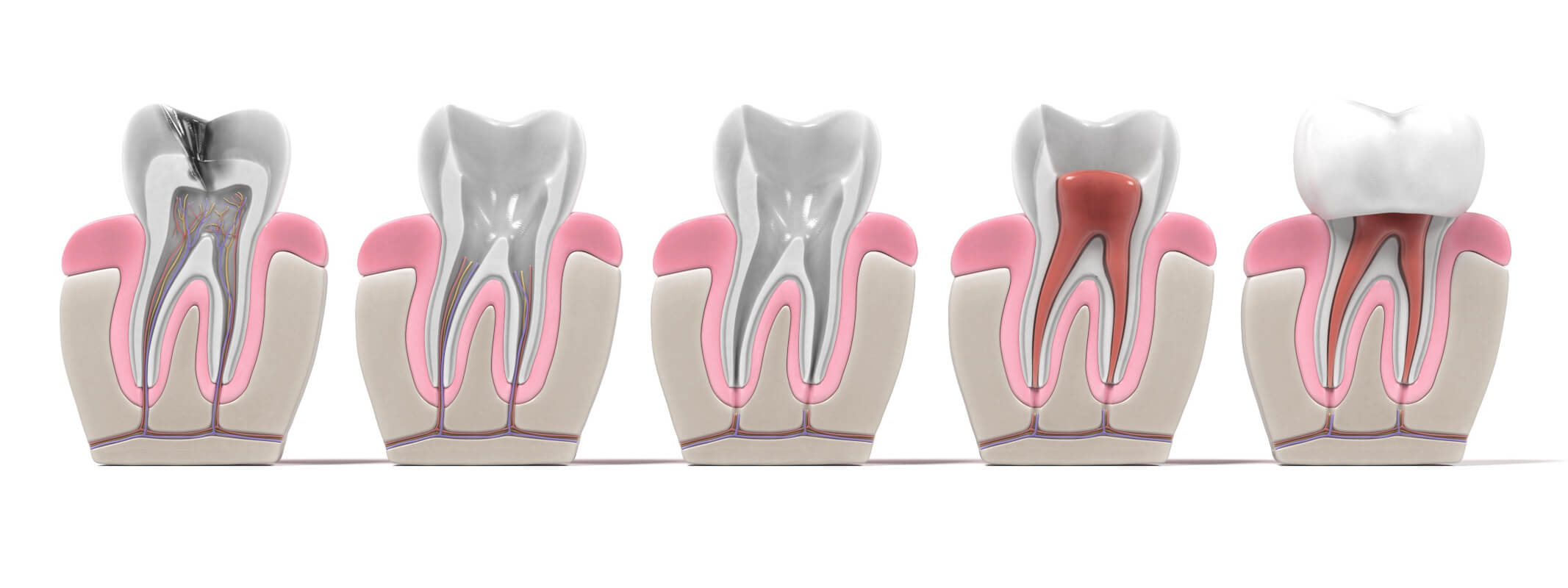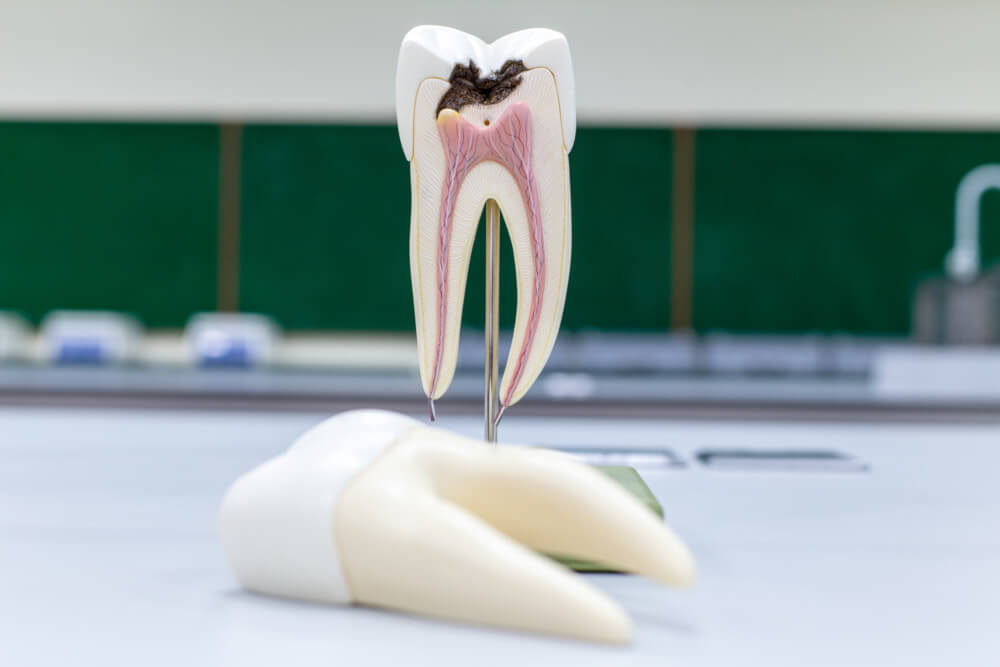
What is a Root Canal?
Root canal procedure is a restorative treatment that can save a tooth that has experienced inner nerve damage through decay or infection, or a tooth that has been damaged due to trauma or injury. The procedure involves the elimination of bacteria through removal of the pulp, followed by thorough cleaning and disinfection. The tooth is then filled to seal the space left by the pulp removal.
Root Canal Symptoms
In the initial stages, patients may not experience any noticeable symptoms of a decayed or infected root canal. As disease progresses, however, there may be growing sensitivity to both pressure and temperature, and some intense pain can be expected. Advanced stages may even be indicated by formation of a dental abscess.
If you are experiencing severe pain when biting down or chewing, sensitivity to temperatures that lasts after the source is removed, swollen gums, or other gum abnormalities such as darkening or appearance of pimples, you may have a decayed or infected root canal. If so, please make an appointment with your dentist immediately in order to increase your chances of saving the tooth with root canal procedure!
What to Expect for Your Root Canal Procedure
Root canal procedure in the past has received a reputation for being scary and painful, but thanks to advances in modern technology and local anesthetics, it has now considered a common and straightforward procedure with pain levels comparable to regular dental fillings procedures. At our family dental clinic, we take special care to always practice gentle dentistry to minimize even the slightest discomfort or pain for our patients.
The root canal procedure will usually require more than one visit to your dentist. Using special instruments, your dentist will remove pulp, nerve tissue, bacteria, and any tooth decay that may be present. The tooth is then thoroughly cleaned and sealed by either a permanent filling or a temporary filling, depending on the need for additional appointments.
At a subsequent appointment, approximately a week later, the roots and the inner cavity of the tooth will be filled and sealed with medicated dental materials. The tooth will then be sealed with a filling, and then capped with a dental crown. This will protect the tooth, prevent further breakage, and restore full functionality and natural appearance.

For the most part, your dentist will always recommend root canal treatment over an extraction if the tooth can be restored. This is because tooth extraction that is not followed up by prosthodontic treatments (e.g. dental implants or dental bridge) to hold the gap can lead to significant and costly dental problems in the future. These can include shifting of adjacent teeth, changes in alignment and bite, bone deterioration in the jaw, and even sagging or disfiguration of facial muscles.
If a tooth is damaged beyond repair and must be removed, or if a patient chooses tooth extraction for any other reason, a dental implant is the best long-term solution for restoration. Depending on the number of extractions or missing teeth, other prosthodontic treatments such as a dental bridge or partial dentures may also be applied.
Contact our dental office today to see if you require a root canal.
FAQs About Root Canal Treatment
When do you need a root canal?
Root canal procedure is used to treat decay or infection in the inner nerve of the tooth. This may be indicated by sensitivity to hot or cold food and drink that lingers after the heat or cold has been removed, pain when biting or chewing, and abnormalities of the gum including pimples or dark coloring.
The procedure may also be used to treat a tooth that has been severely damaged due to some kind of trauma or injury.
How do I care for my tooth bonding?
The only special care required for bonded teeth is to avoid chewing or biting on hard foods or objects. Habits such as nail-biting and chewing on pens can be detrimental to your tooth bonding and should be avoided. Hard and sticky foods should also be avoided to prevent damage. Since the resin is not very stain-resistant, drinking coffee or red wine and smoking can result in long-term discoloration, so these should be avoided or kept to a minimum as well.
Outside of these special care requirements, standard oral hygiene practices will also help extend the life of your tooth bonding. These include regular brushing, flossing, and visits to your dentist for checkups and teeth cleaning.
How long does a root canal take?
Root canal treatment normally takes place over two separate appointments. During the first appointment, removal of the pulp, cleaning, and a temporary seal takes place. This process, including anesthesia, setup, and preparation, can take anywhere from 30 to 90 minutes depending on the complexity of the case.
The second appointment involves more cleaning, permanent sealant, filling, and sometimes the placement of a dental crown.
How bad is pain after root canal procedure?
As the anesthesia wears off, it is normal to feel some discomfort or pain after root canal procedure. This is usually quite mild and can be treated with over-the-counter pain medications. Many patients report that the pain of the symptoms prior to the procedure is actually worse than any post-procedural discomfort.
What does root canal recovery look like?
Root canal recovery, like any other dental or medical procedure, varies from person to person. However, for the most part, patients are able to return to work or school directly from their appointment and resume normal activities.
Patients may notice some initial pain or discomfort with increased sensitivity that subsides over the first few days after treatment. Any persisting extreme pain should not be ignored as this may indicate infection. Please contact your dentist immediately if your pain level is not manageable with over-the-counter pain medications.
Chewing on the treated tooth should be avoided for the first couple of days, after which normal oral hygiene practices are all that is required for maintenance. If you are going in for a second appointment, it is best to chew on the opposite side until the second appointment is complete and the dental crown put in place.
With proper care, your root canal should last a lifetime, so be sure to brush and floss daily and don’t miss your regular dental checkups and teeth cleanings!
contact us now!
Do you need a root canal in Aurora CO? Contact our dental office for a consultation today!


